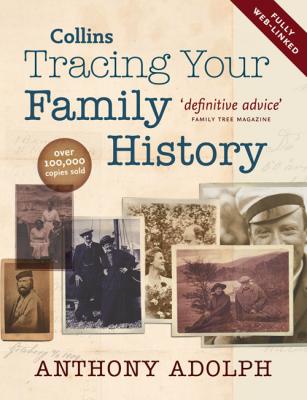Collins Tracing Your Family History. Anthony Adolph
Читать онлайн.| Название | Collins Tracing Your Family History |
|---|---|
| Автор произведения | Anthony Adolph |
| Жанр | Справочная литература: прочее |
| Серия | |
| Издательство | Справочная литература: прочее |
| Год выпуска | 0 |
| isbn | 9780007373567 |
QUICK REFERENCE
WESTMINSTER CENTRAL REFERENCE LIBRARY
www.westminster.gov.uk/services/libraries/findalibrary/westref/
NATIONAL PORTRAIT GALLERY
www.npg.org.uk/search
NATIONAL ART LIBRARY
www.vam.ac.uk/page/n/national-art-library
Gainsborough’s famous family portrait of Mr and Mrs Andrews, c.1748–9.
PHOTOGRAPHERS AND PHOTOGRAPHS
Photography began in earnest in the 1850s and portrait photographs of people who became our ancestors took off in the 1870s. Collections of photographs are at county record offices, libraries and elsewhere, often enabling you to see what places where your ancestors lived looked like and, if you are very lucky, you might even find a picture of your ancestor.
WHERE TO SEARCH
PHOTOGRAPHERS AND PHOTOGRAPHS
QUICK REFERENCE
HULTON GETTY COLLECTION
www.hultongetty.com
NATIONAL MONUMENTS RECORD CENTRE
www.english-heritage.org.uk/daysout/properties/national-monuments-record-centre
FRANCIS FRITH COLLECTION
www.francisfrith.co.uk
Before starting with the main sources for tracing ancestry it is important to understand a little about how and where records are kept, starting with the main archives, and the different ways of gaining access to them. Reading this chapter now may save you a great deal of head-scratching and wasted time later on.
ARCHIVES
There are many organisations that hold archives of records. Be aware that most exist to preserve records, and not primarily to let you finger them. Most of the help you will receive from such organisations will be provided out of kindness, not obligation. Courtesy and thanks never go amiss, whoever you are dealing with.
If you are thinking of visiting an archive to undertake some research, always make sure it will be open, find out if you need to book and also do your best to establish that the records you want to see are actually there. Remember that sometimes records are temporarily removed from their permanent homes for restoration, rebinding and other reasons. Most are free but require a reader’s ticket, so if you do not have one, take some identification, preferably a passport.
USING THE NATIONAL ARCHIVES
GETTING HOLD of material from TNA couldn’t be easier:
THE NATIONAL ARCHIVES (TNA)
This was formed in 2003 through a merger of the Public Record Office and the Historic Manuscripts Commission (HMC). TNA is the principal repository for British national records, which are referred to constantly in this book. Among those records that are used the most by family historians are censuses and Prerogative Court of Canterbury wills and records relating to soldiers and sailors.
The main task of the HMC, also called the Royal Commission on Historical Manuscripts, is to catalogue collections of records outside TNA. Its published reports cover a vast array of manuscripts in public and private hands, from the House of Lords to Longleat, and including businesses, solicitors’ papers, county record offices and so on.
The indexes to the printed reports can make surprising and rewarding ‘lucky dip’ searches, and the HMC’s on-going work is indexed centrally in the National Register of Archives, accessible via TNA’s website. This includes a search facility for those personal names and topics that have been indexed within the records and leads direct to contact details for the relevant archive.
TNA’s website provides a great deal of information about how to get to and use the archives and its records, and also enables you to download any of its many very informative information leaflets which will tell you more about many of the most commonly used records. Look at the website before you go to TNA, not least because you can pre-order the documents and have them ready and waiting
